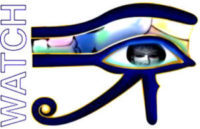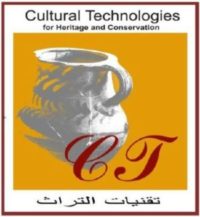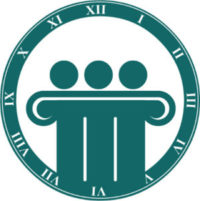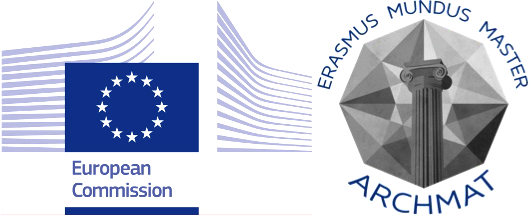Upon completion of several years spent in the promotion and implementation of research and applications in the fields of documentation, conservation and protection of tangible and intangible cultural heritage within international initiatives, WATCH, CULTECH and FOCUH (Friends of Cultural Heritage) join their efforts again to gather in the same forum, institutions, international organisations, public and private experts, scholars and independent researchers, professional associations, civil society organisations, NGOs, and other stakeholders, hosting the Eighth International Conference on Science and Technology in Archaeology and Conservation (STAC 8) in Amman (Jordan) from 21 through 25 May 2017.
While the role of science and technology in the process conducting to the discovery, investigation, conservation, protection and promotion of cultural heritage remains the core leitmotif of this conference as in its previous editions, the rationale of this 8th conference revolves around the idea of gathering relevant disciplines that deal with cultural heritage so as to learn from their latest experiences and perspectives, and to find out what areas of research are contributing to the understanding and conservation of sites, monuments, artefacts, technologies, and other ancient cultural expressions.
It is in this framework that, the state of the art of advanced research and the achievements in the fields of cultural heritage protection and promotion in various frameworks internationally will be presented at the STAC together with several concrete experiences made on the field. Meanwhile, the Eight edition of the conference will dedicate a special attention to the sharp increase of hazards associated to climate change, extreme natural events and human activities, often inter wined in a terrible domino effect that threatens life and cultural heritage as never before.
The huge loss of cultural heritage registered during the last few decades should have taught us that the implementation of concrete strategies for its protection represents a priority.
The competent authorities tend to ignore, underestimate or, often to neglect the several hazards that threaten cultural heritage and their catastrophic impact when extreme events occur. The heavy impact of current conflicts on cultural heritage confirms that, there is an urgent need to elaborate adequate risk prevention (mitigation, response and recovery) policies and to deploy appropriate measures to safeguard cultural heritage. It is within such a context that the organisers wish to pay special attention to social unrest and armed conflicts in various geographic areas that heavily hit especially the Arab world and the devastating effects that they produce on cultural heritage. Phenomena that add to the dismay caused by the unacceptable loss of innocent hundreds of thousand human lives and millions of bystanders who have fled to neighbouring countries, and even much further away, undertaking dangerous journeys that too often determine a further loss of innocent lives.
The negative impact of the current armed conflicts widespread at the regional level jeopardises the efforts made and the results obtained in many countries of the Middle East during various decades to progressively develop their societies. While the “Arab Spring” aimed to create a space of freedom and self-determination for the Arab citizens’, it often turned to be the main cause for concern because it has created the atmosphere for the spread of the terrorist ideology up to gain the upper hand in some areas, with the disastrous effects that are evident to all since, not only terrorism has proven to be a serious threat to human life and stability, but also to cultural heritage.
It is very important hence to understand the current trend in world politics and to analyse their impact on cultural heritage. This is not restricted to direct vandalism in the areas under the control of terrorist militia but further extends to countries bordering the territories afflicted by armed conflicts, such as namely Jordan, Lebanon, Turkey, etc.
The question is: What are the impacts on cultural heritage in these countries? The immediate result is that the economies of neighbouring countries has been deteriorating especially those who are forced to raise arms against terrorism in Syria and Iraq. Furthermore, the increasing number of refugees from the victim countries places a tremendous pressure on environmental resources such as water and energy. In addition, tourism to these countries is heavily suffering. People are simply afraid to go. The contribution of the CH sites to the economy is heavily reduced. From a purely economic point of view, when poverty and recession is setting in, these sites are not contributing to the overall GDP and hence it is difficult to justify the costs needed for their protection. It is no surprise that in already poor countries, like Jordan and Lebanon less and less resources are made available for conservation of CH. This is especially true since the donor countries and their agencies are currently (and rightly so) placing priority on refugee relief and poverty alleviation.
Thus, while politics and its multifaceted scenario has never been and is not a concern in the agenda of the STAC, most certainly these last developments fall within the mandate of the conference and its co-organizers. It is with this in mind that all the organisers aim to attract the attention of all participants not involved yet within the UNESCO initiative #Unite4Heritage. Cultural Diversity under Attack: Protecting Heritage for Peace by positioning the eighth edition of the STAC within the context of those initiatives that focus on heritage as a key for reading the human narration, a means to promote cultural dialogue valuing cultural diversity as a vehicle for the development of mutual respect between peoples. A tangible and direct response to those who use terror as an easy tool to impose subjugation and their poor leadership empty of any contents.
A multidisciplinary review of the most recent trends connected with the conservation and protection of cultural heritage from the effects of global warming, climate change and other associable natural events such as flash-floods, wind blasting and erosion, landslides and earthquakes, but also technological and anthropogenic aggression especially at the presence of a weak governance of the territory, blind excessive urban development, inappropriate or abusive land use, mismanagement of structures and infrastructures, social unrest, terrorism, armed conflicts, or even worse, their dreadful combination with a domino effect.
Case studies where documentation has specifically helped in the protection of the CH, will be reviewed. In fact, considering the great importance assumed by cultural heritage documentation as a key instrument to protect movable and immovable cultural heritage in times of conflict, the conference will review the most advanced research and innovative applications in data acquisition, classification, documentation, digital interpretation, theoretical reconstruction or geometric simulation, or in developing mathematical models to plan proper heritage conservation, protection and promotion measures to be deployed especially before or during major events and consequent disasters occur. Contributions from international experts of different disciplines and sectors variously concerned with the protection of cultural heritage will be given at the conference presenting the most recent developments registered in the in the fields of Science, Technology, Management, Policies, Legislation and Economy.







